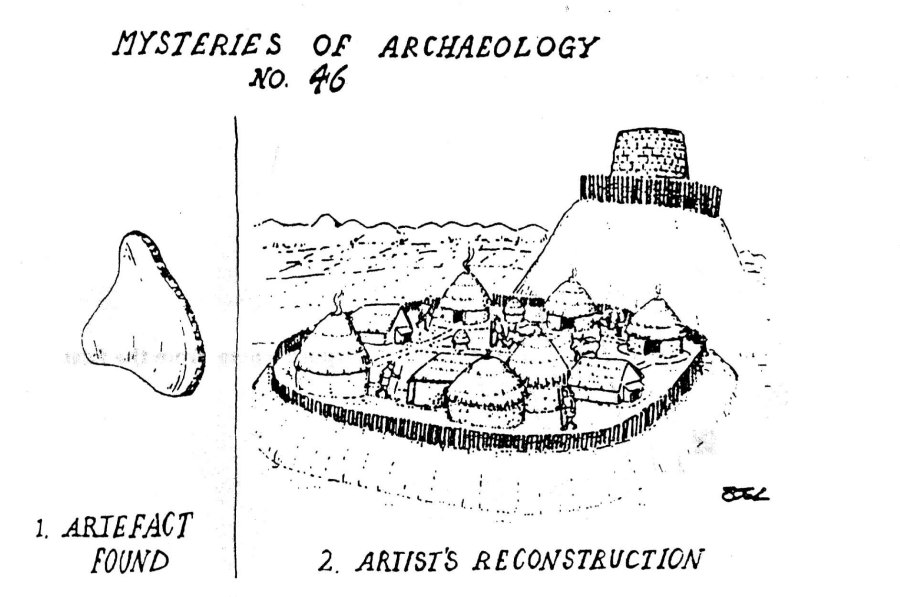 | Caithness.Org | Community | Business | Entertainment | Caithness... | Tourist Info | Site Map |
• Advertising • Chat Room • Contact Us • Kids Links • Links • Messageboard • News - Local & Scottish • News - UK & News Links • About / Contact Us • Submissions |
• Bookshop • Business Index & News • Jobs • Property For Sale • Property For Rent • Shop • Sutherland Business Index |
• Fishing • Fun Stuff • George, The Saga • Horses • Local Galas • Music • Pub Guide • Sport Index • What's On In Caithness |
• General Information • B & Bs • Backpackers • Caravan & Camping • Ferries • Getting Here • Holiday Letting • Hotels • Orkney • Pentland Firth • Sutherland • Taxis |
| N E W S F E E D S >>> |
|
Caithness Field Club Bulletin |
|
Pattern Recognition by Don Smith The cartoon shown below, copied from Private Eye, amused some of our club members. It does raise a smile but it does less than justice to those who give much time and thought to the piecing together of apparently disparate bits of evidence and so produce a reasonably consistent and plausible story. All sciences, including archaeology, employ the methodology. By carefully studying the disposition, composition and shape of a few stones, and relating all this to similar finds in other places, a pattern may suggest itself to the practised archaeologist. A tentative idea, too nebulous at this stage to be called a theory, may emerge. The expert may then test his hunch by positively seeking something specific to support his hypothesis. For example, Gordon Wilson, our own linguist of stones, observed an arrangement of a few stones at Dorrery and suggested that a souterain might be close by. A search soon confirmed his prediction. That calls for imagination, backed by the expertise of the archaeologist. Similar skills are the stock in trade of those who practise geology, the study of fossils and many other professions.
There is usually a significant contribution from pattern recognition in a great deal of human activity. Recognition of people or objects by sight or smell are some examples. In modem technology, fingerprinting and DNA comparisons, image enhancement of photographs, and the non-destructive examination of thick steel plates to identify and characterise flaws are other examples. Some types of humour rely on setting up a false context to catch the reader by suggesting one pattern and then producing a different one. Conjurors do it with rabbits out of a hat, cartoonists with pictures, comics with words. Here is another cartoon which involves patterns.
|
� Copyright Caithness Field Club











